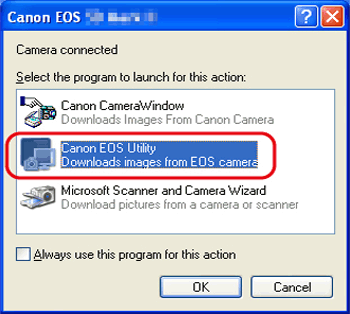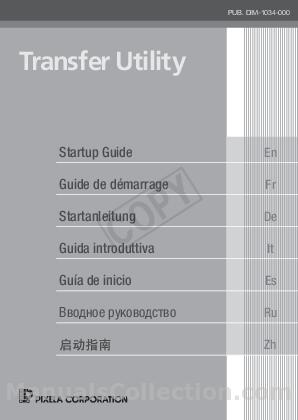
delete it.Ĭonnect the camcorder to your iMac, make sure it is also connected power source. Look for a file with name: “….” – the file name I gave might not be right, but it should be obvious. Now, go to your home folder, then library, then preferences.
#Transfer utility canon pro#
Just for clarifications, you need to have iMovie ’08, Final Cut Express 4, or Final Cut Pro 6.0.2 to work with AVCHD camcorder successfully. But iMovie won’t do anything with it, nor will iDVD, as it says it must be hooked up via Firewire, which the HG10 doesn’t support. My computer recognizes the camera, as an icon appears on my desktop called “Canon HDD”. I am at a loss as to what to try from here.
#Transfer utility canon how to#
I tried trashing the iMovie 08 preferences, but do not know how to do so. I have HG10 and an intel based 24inch imac.
#Transfer utility canon for mac#
There are other ways to make the process a little bit easier for Mac users, I will get to that later.īuy Sony Vegas Movie Studio 8 Platinum Edition from

After all, AVCHD is developed by Sony and Panasonic. Because of this, the import process on the Mac is taking a lot longer in contrast to Sony Vegas.

Those Mac programs have to convert the AVCHD videos on the fly during imports. Mac users are at a disadvantage, because iMovie ’08, Final Cut Express 4, and Final Cut Pro 6 do not recognize the “.mts” files. Sony Vegas users can copy the AVCHD folder to another hard drive, then import the video clips from the hard drive instead of the camcorder. It takes a relatively short time to import the video clips from the camera to Sony Vegas. Sony Vegas Movie Studio 8 Platinum Edition can natively read movies in AVCHD format, it can directly read the “.mts” files. Once the camcorder is connected, turn the camera to “PLAY” mode. It is not the best place for the USB port. The USB port is located on the inside, covered by the LCD screen. The placement of the USB 2.0 port of Canon HG10 is a little bit awkward. One other important note is that the camcorder has to be connected to the power source in order to “import” the video clips. Just connect the camcorder to the computer via USB 2.0 port.

That’s excluding the options to open up the camcorder, take out the hard-drive, mount it in an external USB 2.0 (or FireWire but importing is not supported), and then connect it to the computer. Canon HG10 is a hard-drive-based AVCHD camcorder, and the only way to transfer the data from the hard drive is to connect it to the computer via USB 2.0 port. In a continuing review of AVCHD Camcorders, let’s take a look at at transferring videos from Canon HG10 to the computer.ĪVCHD camcorders are typically equipped with and connect to computers via USB 2.0 port.


 0 kommentar(er)
0 kommentar(er)
